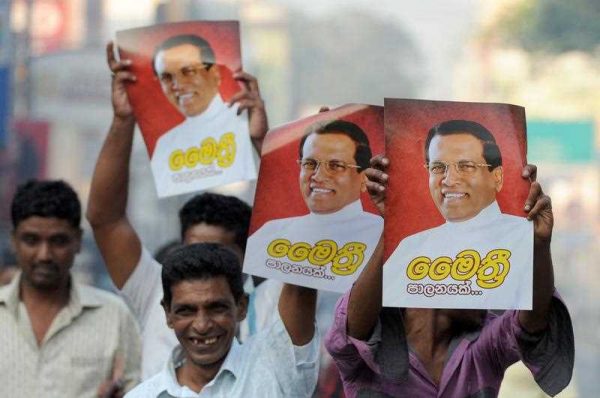What is more, Rajapaksa started the post-war infrastructure revolution in the country by building ports, highways and power plants. These were very visible and impressive at first sight. He also initiated an urban modernisation program, which became popular among the urban middle class.
Rajapaksa’s astrologers, upon whom the President relied heavily for advice, had predicted that if an election were held before April 2015, Rajapaksa would be a sure bet. Though Rajapaksa had two more years of his presidential term to complete, an early election in order to secure a third term was preferred. Preparation for a presidential election by the ruling party started around August 2014, and the opposition appeared too divided and weak to provide any formidable challenge for the incumbent.
But this positive scenario was deceptive.
Rajapaksa’s ‘populist authoritarianism’ built upon Sinhalese nationalism, catering to the Sinhalese living in rural and semi-urban areas had isolated the minority community. In order to put off more painful structural adjustment and reform, Rajapaksa’s economic policy focused on debt-driven consumption and investment-led growth. His foreign policy, meanwhile, was skewed towards China, Pakistan and Iran, and was somewhat antagonistic towards Western countries as the latter were pursuing human rights issues pertaining to the final phase of the war. He was basically moving towards a one-party state within this framework: an outcome that was unsustainable.
Corruption was rampant, the rule of law was breaking down and the principles of good governance were being ignored. Inequality was increasing and the cost of living rising. Politically, cracks were appearing in the ruling party due to resentment of the increasingly authoritarian tendencies of the Rajapaksa government.
What the opposition required was a leader to unite the fragmented opposition and who would be acceptable to Rajapaksa’s base: the majority Sinhala-Buddhist community that comprises 70 per cent of the population. That leader turned out to be Maithripala Sirisena, a former Rajapaksa ally who quit the government just after the election was called. He united the opposition and brought with him disenchanted members of the Rajapaksa government.
For Sirisena, managing a grand coalition of 49 political parties was an uphill task. The common desire to curtail the powers of the executive presidency and restore good governance and enforce the rule of law is manifest in the coalition’s agenda for Sirisena’s first 100 days in office.
The election was a hard battle for Sirisena. Most media outlets were controlled by the government, with the opposition massively disadvantaged. But the opposition used social media effectively to highlight abuses of power during Rajapaksa’s regime. Sirisena won with 51.3 per cent of the popular vote. Sri Lanka has seen a peaceful change of government with minimal violence or bloodshed, a victory thanks in part to the rise of social media — in line with those of Narendra Modi in India and Joko Widodo in Indonesia. A leading Minister in Sirisena’s new government compared the victory to the Arab Spring but done ‘by ballot’ and not ‘by bullet’.
Why did Rajapaksa lose? The anti-incumbency factor was strong, and Rajapaksa had alienated minorities — a political solution to tensions in the Tamil northeast was non-existent, and he (wrongly) believed that economic development in the region would suffice. Muslims lost confidence when they saw the regime indirectly protecting Sinhalese Buddhist extremists who were responsible for June 2014 riots in a southern Muslim city. Thus Rajapaksa lost overwhelmingly in constituencies where minority communities were in the majority. Rajapaksa won in many Sinhalese Buddhist rural electorates but even there his majority declined. He needed 6 out of 10 Sinhalese Buddhists to vote for him if he was to offset losses in minority communities — but this kind of result was ultimately out of reach.
The Sri Lankan experience shows that as a country moves towards a higher level of income (with GDP per capita income at US$3280 in 2013), people’s desire for democracy and good governance also increases, although traditional issues such as the cost of living and unemployment still remain electorally important. And in the world of social media, bribery and corruption cannot be hidden from the public for long — and when they are exposed, they are political poison for governments. It also shows that winning a war doesn’t necessarily make you the best candidate to bring about peace among different communities.
The people’s choice on 8 January clearly reflected this thinking. Eventually democracy triumphed and for the first time in its history, Sri Lanka will embark on something akin to a national democratic government. It appears to be a great opportunity for repairing a tattered democracy and furthering post-war reconciliation.
Saman Kelegama is the Executive Director of the Institute of Policy Studies of Sri Lanka.


Thank you for a good, objective review of events.